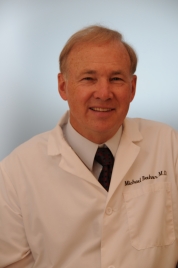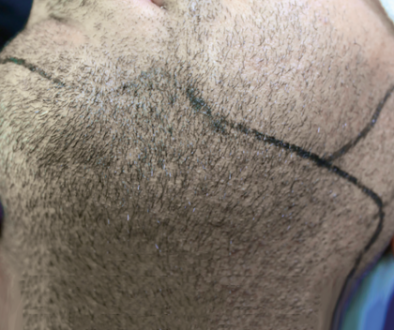What is the Hair Transplant “Stick and Place” Method and How is it Used?
This comment, addressed by Coalition hair restoration surgeon Dr. Michael Beehner was shared by a member of our Hair Loss Social Community and Discussion Forums:
Some hair transplant surgeons feel that the “stick and place” technique is inferior (to lateral slit technique or pre-prepared incisions). Therefore I was surprised to read that Shapiro Medical Group seems to be a proponent of this technique and still use it today on their patients and describe it as “gentle”? (I’m assuming all this from reading their website: Maximizing Survival. Maybe the website is outdated? If yes, please let me know). Which leads me to ask what other top hair restoration doctors use or defend this technique?
 If one elects to perform hair transplantation using a stick-and-place method exclusively, then there are two choices both of which have drawbacks: One is to delegate to the assistants the task of both making the recipient sites and placing the grafts, which actually is very difficult to do with two pair of hands on the head. With this method the doctor basically removes a donor strip and draws a hairline and then looks in on what the assistants are doing. The second choice is for the doctor to do the entire hair transplant procedure himself using a stick-and-place method. For the typical size sessions we do today of 2000 grafts or so, this would be a terrible way to do the procedure because the grafts would be out of the body for up to 15 hours and the doctor would be so exhausted mentally and physically that the work would not be ideal.
If one elects to perform hair transplantation using a stick-and-place method exclusively, then there are two choices both of which have drawbacks: One is to delegate to the assistants the task of both making the recipient sites and placing the grafts, which actually is very difficult to do with two pair of hands on the head. With this method the doctor basically removes a donor strip and draws a hairline and then looks in on what the assistants are doing. The second choice is for the doctor to do the entire hair transplant procedure himself using a stick-and-place method. For the typical size sessions we do today of 2000 grafts or so, this would be a terrible way to do the procedure because the grafts would be out of the body for up to 15 hours and the doctor would be so exhausted mentally and physically that the work would not be ideal.
What was certainly referred to with reference to the doctors mentioned, which is true of our clinic also, is that the sites are first made and then the doctor and the assistants alternate in placing the grafts, which is the step in the procedure that takes the most time. Then, at the end of the case, most of us save out 50-100 follicular units and the physician himself looks for little “cracks” in which to place those final grafts to achieve the best density and naturalness of the hairline.
Mike Beehner, M.D.
Additional comments from Janna, the lead medical technician for Coalition hair restoration surgeons Dr. Ron Shapiro and Dr. Paul Shapiro.
 We do not do 100% stick and place but, when sticking and placing occurs, the physician is the only one making the incisions while the technician plants the graft immediately after. The majority of the incisions are made and the last 10-20% will likely be made at the end for final touch ups with sticking and placing.
We do not do 100% stick and place but, when sticking and placing occurs, the physician is the only one making the incisions while the technician plants the graft immediately after. The majority of the incisions are made and the last 10-20% will likely be made at the end for final touch ups with sticking and placing.
Janna
Lead Medical Tech and Surgical Manager
Shapiro Medical Group
—-
David (TakingThePlunge)
Editorial Assistant and Forum Co-Moderator for the Hair Transplant Network, the Coalition Hair Loss Learning Center, and the Hair Loss Q & A Blog.
To share ideas with other hair loss sufferers visit the hair loss forumand social community
Get Proven Treatments at the Best Prices by visiting our new online hair loss treatment shop.
Technorati Tags: Hair Loss, hair transplant, stick and place, hair restoration, hair transplantation, stick-and-place, follicular units



